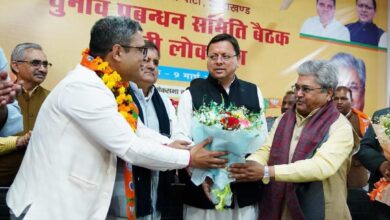The Problem of Population Growth: Rising Demand for Roads, Schools, and Other Basic Amenities with Every Birth

Childbirth is Not Just a Personal Matter for Parents
Population Control Law is the Need of the Hour
Dehradun. Prashant Advait Foundation’s founder and former civil service officer, Acharya Prashant, stated that the growing population in India is not just an economic or social problem for the country but a part of a global crisis. Every citizen must understand this issue and play their role in finding a solution.
Population growth in India has become a serious problem. Today, India is the most populous country in the world, with a population of approximately 1.44 billion, accounting for 17.76% of the global population. This rapid population growth has profoundly impacted the country’s resources, environment, and social structure. If appropriate steps for population control are not taken promptly, the consequences could be severe.
The increasing population directly affects the country’s natural resources. Resources like food production, water, electricity, and fuel are limited, yet their demand continues to grow daily. For instance, the average Indian household’s electricity consumption has increased tenfold in the last 20 years.
Acharya Prashant pointed out that every newborn brings significant demand for resources such as food, water, housing, education, and transportation. Earth’s resources are finite. Scientists estimate that if every person consumed as many resources as the average American citizen, we would need 17 Earths. Even in the current scenario, Earth’s resources are insufficient for such a large population. With each new child, forests are being cut down, species are becoming extinct, and rivers are drying up. The rising population is also contributing to unemployment and inflation in the country.
Acharya Prashant further explained that when the population grows, employment opportunities cannot expand at the same pace. This leads to dissatisfaction among the youth. India’s average age is declining, meaning most of the population is young. These young people face economic and social pressures due to a lack of jobs and resources. Hidden unemployment is also a significant issue in India. Many people cannot or do not take employment seriously, often because their parents provide financial support.
Population growth has a deep connection with climate change. The increasing population leads to excessive use of natural resources such as coal, oil, and gas. These resources are not only limited but also contribute to greenhouse gas emissions when burned, intensifying climate change and pollution issues. Forests are being cleared to make room for agricultural land due to population growth. When forests are destroyed, numerous species of animals and plants become extinct.
Population growth is often viewed as a personal decision, but its impact is felt by society, the nation, and the entire world. With every child’s birth, the demand for roads, schools, and other basic amenities increases. It would be wrong to say that childbirth is merely a personal matter for parents.
The government must enact strict and transparent laws for population control with clear objectives. Educating people about the social and economic consequences of population growth is crucial. The mindset of considering population growth as “God’s gift” based on religious and cultural beliefs needs to be challenged.
Population growth is not merely an economic or social issue for India but part of a global crisis. If not controlled immediately, its effects will be visible not just in India but across the Earth. Every citizen has the responsibility to understand this problem and contribute to its solution. Strict laws, awareness campaigns, and social support for population control are the need of the hour. Population growth impacts not only humans but also the environment, wildlife, and every resource on Earth. Hence, focusing on population control is essential for a sustainable future.






The population growth in India is a genuine problem. We have to think about it.